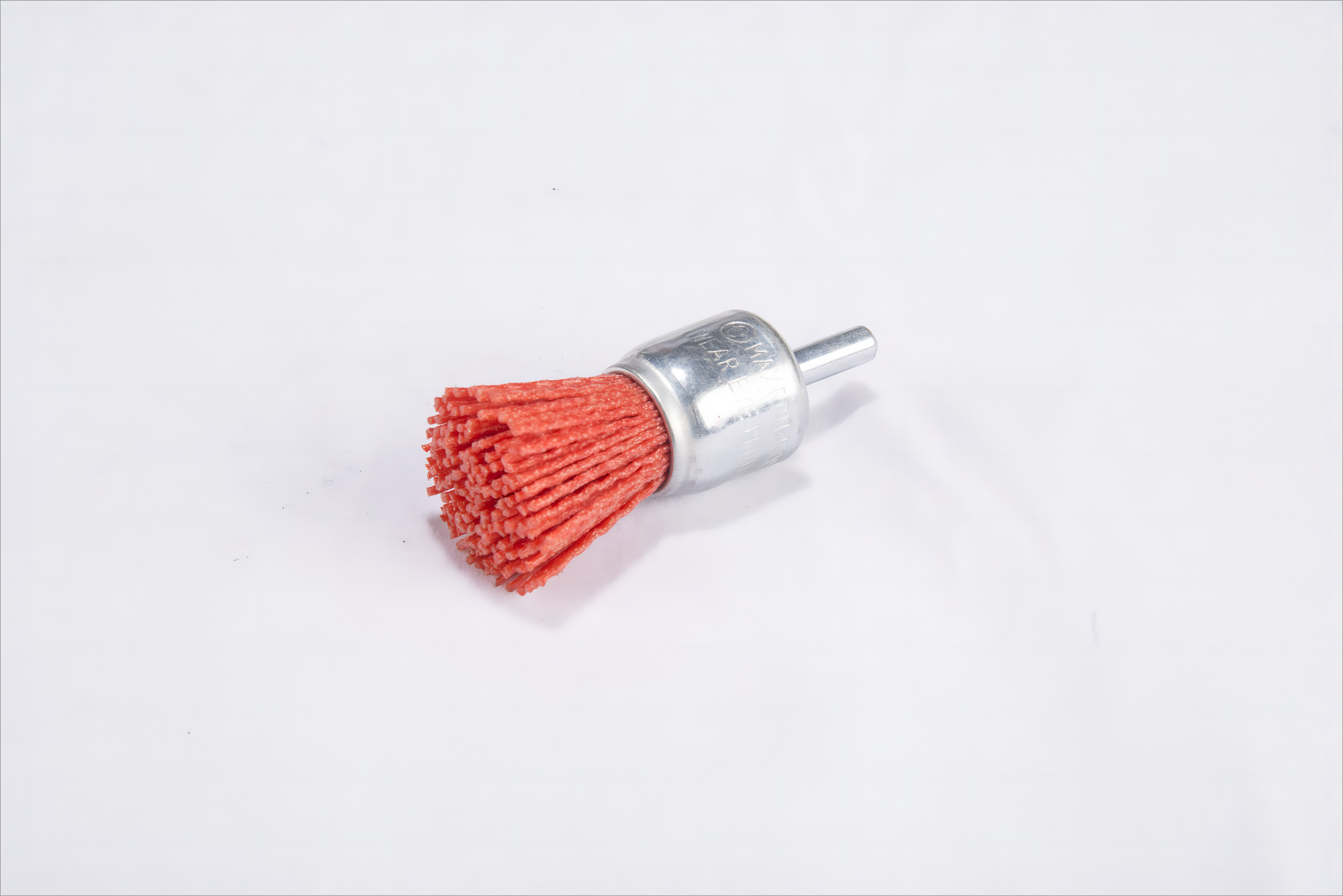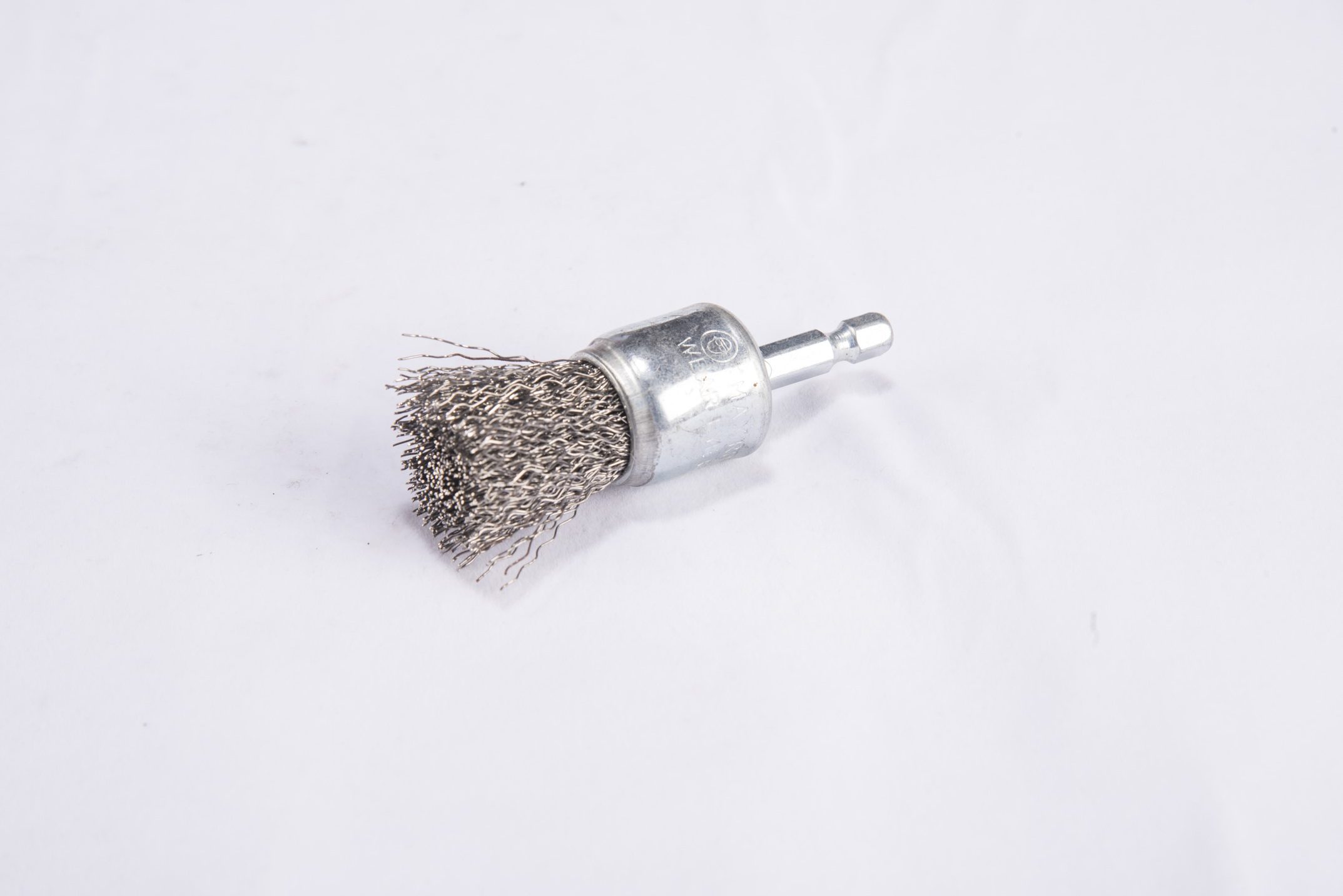Metal end brushes are essential tools in the industrial and manufacturing sectors, valued for their versatility and efficiency in surface preparation, cleaning, deburring, and finishing applications. They come in various shapes, sizes, and materials, each designed to meet specific needs and challenges. This article explores the different types of metal end brushes, their applications, and the factors to consider when selecting the right brush for your project.
Introduction to Metal End Brushes
Metal end brushes are small, cylindrical wire brushes designed for precision work. They are typically mounted on power tools such as drills, die grinders, and rotary tools. The primary purpose of metal end brushes is to clean, deburr, and finish metal surfaces, removing rust, paint, scale, and other contaminants. Their compact size and robust construction make them ideal for reaching tight spaces and intricate areas that larger brushes cannot access.
Types of Metal End Brushes
- Crimped Wire End Brushes
Crimped wire end brushes are the most common type of metal end brushes. They feature wire filaments that are crimped or waved to create a flexible and durable brushing action. These brushes are available in various wire materials, including carbon steel, stainless steel, and brass.
Applications: Crimped wire end brushes are suitable for light to medium-duty cleaning, deburring, and surface preparation tasks. They are often used to remove rust, paint, and corrosion from metal surfaces and for blending and polishing weld seams.
Advantages: The crimped design provides a consistent brushing action, making these brushes effective for general-purpose applications. They are also less aggressive than other types, reducing the risk of damaging delicate surfaces.
- Knotted Wire End Brushes
Knotted wire end brushes, also known as twisted wire end brushes, consist of wire filaments twisted together to form a more aggressive and rigid brushing action. These brushes are available with single or double knots, depending on the desired level of aggressiveness.
Applications: Knotted wire end brushes are ideal for heavy-duty cleaning, deburring, and surface preparation tasks. They are commonly used to remove heavy rust, scale, weld slag, and other tough contaminants from metal surfaces.
Advantages: The knotted design provides increased strength and durability, making these brushes suitable for demanding applications. They can quickly and effectively remove stubborn materials, reducing the time and effort required for surface preparation.
- Encapsulated Wire End Brushes
Encapsulated wire end brushes feature wire filaments embedded in a synthetic resin or elastomer. This encapsulation helps to control the brush’s aggressiveness and provides additional support to the wire filaments, extending the brush’s life.
Applications: Encapsulated wire end brushes are used for controlled, moderate cleaning and deburring tasks. They are ideal for applications where a more aggressive brush might damage the workpiece, such as cleaning threaded holes or intricate surfaces.
Advantages: The encapsulation reduces wire breakage and minimizes the risk of damage to the workpiece. These brushes provide a more consistent brushing action and longer service life compared to non-encapsulated brushes.
- Nylon End Brushes
Nylon end brushes are made with abrasive-impregnated nylon filaments, providing a non-metallic alternative to traditional wire brushes. These brushes are available in various grit sizes, allowing for a range of cleaning and finishing applications.
Applications: Nylon end brushes are suitable for cleaning and finishing tasks on softer materials such as aluminum, brass, and plastic. They are commonly used for polishing, deburring, and surface conditioning.
Advantages: Nylon end brushes are non-reactive and non-sparking, making them safe for use in hazardous environments. They are also less likely to damage delicate surfaces and can be used with a variety of abrasives for different finishing requirements.
- Brass Wire End Brushes
Brass wire end brushes are made with brass wire filaments, offering a softer brushing action compared to steel wire brushes. Brass is a non-sparking material, making these brushes suitable for use in potentially explosive environments.
Applications: Brass wire end brushes are ideal for light cleaning, polishing, and deburring tasks on soft metals such as copper, brass, and aluminum. They are also used for cleaning electronic components and delicate surfaces.
Advantages: The softer brass filaments reduce the risk of scratching or damaging sensitive surfaces. These brushes are also non-sparking, making them safe for use in environments where flammable materials are present.
- Stainless Steel Wire End Brushes
Stainless steel wire end brushes are made with stainless steel wire filaments, providing excellent corrosion resistance and durability. These brushes are suitable for use in harsh environments and on materials that require a rust-free finish.
Applications: Stainless steel wire end brushes are used for cleaning, deburring, and surface preparation tasks on stainless steel, aluminum, and other non-ferrous metals. They are also suitable for use in food processing and pharmaceutical industries due to their corrosion-resistant properties.
Advantages: Stainless steel wire end brushes offer long-lasting performance and resistance to rust and corrosion. They are ideal for applications that require a clean, rust-free finish and can be used in wet or dry conditions.
Factors to Consider When Choosing a Metal End Brush
Selecting the right metal end brush for your application involves considering several factors:
- Material of the Brush
- Carbon Steel:Suitable for general-purpose cleaning and deburring on ferrous metals. Provides good durability and aggressiveness.
- Stainless Steel: Ideal for use on non-ferrous metals and applications requiring corrosion resistance. Suitable for food and pharmaceutical industries.
- Brass: Best for light cleaning and polishing on soft metals. Non-sparking and safe for use in explosive environments.
- Nylon: Suitable for cleaning and finishing on softer materials. Non-metallic and safe for delicate surfaces.
- Brush Filament Design
- Crimped: Provides a consistent brushing action for light to medium-duty tasks. Less aggressive and suitable for general-purpose applications.
- Knotted:Offers a more aggressive brushing action for heavy-duty tasks. Increased strength and durability for demanding applications.
- Encapsulated: Provides controlled aggressiveness and extended brush life. Ideal for moderate cleaning and deburring tasks.
- Size and Shape
- Diameter: Choose a brush diameter that fits the tool and the workpiece. Larger diameters cover more surface area, while smaller diameters provide precision.
- Shape: End brushes are typically cylindrical, but some variations include tapered or conical shapes for reaching tight spaces and intricate areas.
- Operating Speed
- RPM Rating:Ensure the brush’s RPM rating matches the tool’s operating speed. Operating a brush at too high a speed can cause wire breakage and reduce brush life.
- Tool Compatibility: Confirm that the brush is compatible with the power tool you are using. Different brushes are designed for specific tools such as drills, die grinders, and rotary tools.
Conclusion
Metal end brushes are indispensable tools for a wide range of industrial and manufacturing applications. Understanding the different types of metal end brushes and their specific uses can help you select the right brush for your project, ensuring efficient and effective results. Whether you need to clean, deburr, or finish a metal surface, there is a metal end brush designed to meet your needs. By considering factors such as brush material, filament design, size, shape, and operating speed, you can achieve optimal performance and extend the life of your brushes, ultimately improving the quality and efficiency of your work.


